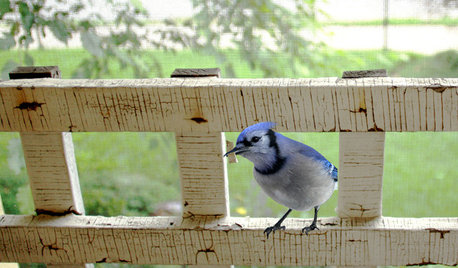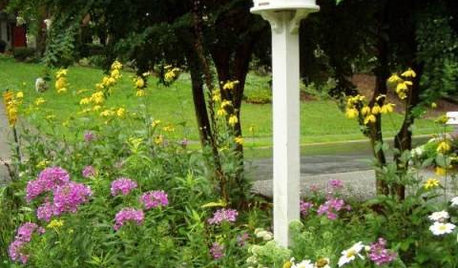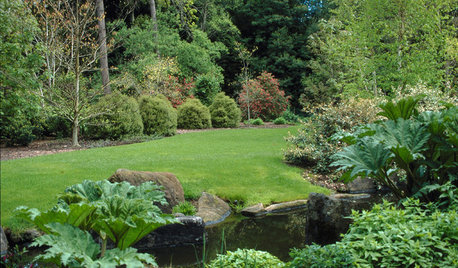Help the birds in my poor yard?
AdamM321
18 years ago
Related Stories

GARDENING FOR BIRDSWhat to Know About Birds Nesting in Your Yard
Learn how to observe, record data and help ornithologists with NestWatch’s citizen science project understand bird trends
Full Story
EARTH DAYHow to Help Your Town’s Beneficial Birds and Bugs
Make a habitat using local materials to provide a home to the creatures that help our gardens
Full Story
GARDENING FOR BIRDSBackyard Birds: Meet Some Clever and Curious Jays
Boisterous jays provide plenty of backyard bird-watching in winter. Here’s how to identify all the varieties and welcome them into your yard
Full Story
GARDENING AND LANDSCAPINGHow to Attract Birds to Your Garden
From habitats to feeders, simple tips to help your yard take flight
Full Story
STANDARD MEASUREMENTSThe Right Dimensions for Your Porch
Depth, width, proportion and detailing all contribute to the comfort and functionality of this transitional space
Full Story
GARDENING AND LANDSCAPINGBe a Citizen Scientist to Help Wildlife, Learn and Have Fun Too
Track butterflies, study birds, capture stars ... when you aid monitoring efforts, you’re lending Mother Nature a hand
Full Story
GARDENING GUIDESYou Don't Need Prairie to Help Pollinators
Woodlands, marshes, deserts — pollinators are everywhere
Full Story
GARDENING GUIDESBackyard Birds: Northern Cardinals in the Snow, and Other Red Birds
Brilliant crimson feathers make these friends stand out in a crowd
Full Story
GARDENING GUIDES8 Unthirsty Plants Help You Save Water in Style
Spend less effort and money on your landscape with drought-tolerant and native plants that liven up your yard
Full Story
GARDENING GUIDESBackyard Birds: How to Care for American Goldfinches
The American goldfinch is a bright-in-the-summer visitor and one of the only vegetarian songbirds. Here's how to give them a healthy habitat
Full StorySponsored



jillmcm
AdamM321Original Author
Related Discussions
How to keep birds out of my yard without scaring away Hummers?
Q
Unusual birds in my yard
Q
Poor shape and shade in my front yard. HELP!!!
Q
Help with unidentified pair of brown birds in back yard
Q
roseunhip
dragonthoughts
jillmcm
AdamM321Original Author
jillmcm
Elaine_NJ6
roseunhip
AdamM321Original Author
AdamM321Original Author
AdamM321Original Author
AdamM321Original Author
roseunhip
jillmcm
AdamM321Original Author
AdamM321Original Author
roseunhip
AdamM321Original Author
njbiology